Ethan Goan
Automatic Radar Signal Detection and FFT Estimation using Deep Learning
Feb 29, 2024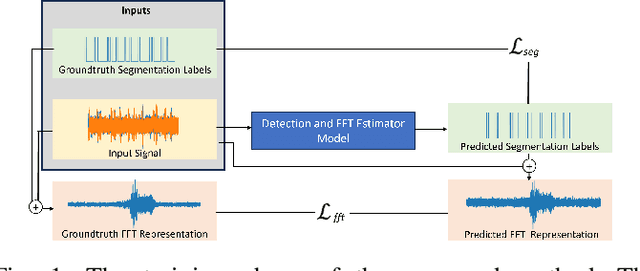


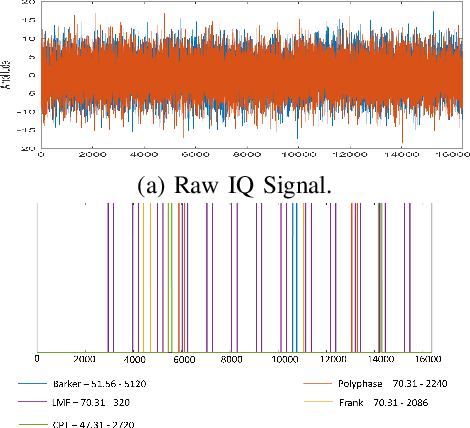
Abstract:This paper addresses a critical preliminary step in radar signal processing: detecting the presence of a radar signal and robustly estimating its bandwidth. Existing methods which are largely statistical feature-based approaches face challenges in electronic warfare (EW) settings where prior information about signals is lacking. While alternate deep learning based methods focus on more challenging environments, they primarily formulate this as a binary classification problem. In this research, we propose a novel methodology that not only detects the presence of a signal, but also localises it in the time domain and estimates its operating frequency band at that point in time. To achieve robust estimation, we introduce a compound loss function that leverages complementary information from both time-domain and frequency-domain representations. By integrating these approaches, we aim to improve the efficiency and accuracy of radar signal detection and parameter estimation, reducing both unnecessary resource consumption and human effort in downstream tasks.
Piecewise Deterministic Markov Processes for Bayesian Neural Networks
Feb 17, 2023Abstract:Inference on modern Bayesian Neural Networks (BNNs) often relies on a variational inference treatment, imposing violated assumptions of independence and the form of the posterior. Traditional MCMC approaches avoid these assumptions at the cost of increased computation due to its incompatibility to subsampling of the likelihood. New Piecewise Deterministic Markov Process (PDMP) samplers permit subsampling, though introduce a model specific inhomogenous Poisson Process (IPPs) which is difficult to sample from. This work introduces a new generic and adaptive thinning scheme for sampling from these IPPs, and demonstrates how this approach can accelerate the application of PDMPs for inference in BNNs. Experimentation illustrates how inference with these methods is computationally feasible, can improve predictive accuracy, MCMC mixing performance, and provide informative uncertainty measurements when compared against other approximate inference schemes.
Uncertainty in Real-Time Semantic Segmentation on Embedded Systems
Dec 20, 2022Abstract:Application for semantic segmentation models in areas such as autonomous vehicles and human computer interaction require real-time predictive capabilities. The challenges of addressing real-time application is amplified by the need to operate on resource constrained hardware. Whilst development of real-time methods for these platforms has increased, these models are unable to sufficiently reason about uncertainty present. This paper addresses this by combining deep feature extraction from pre-trained models with Bayesian regression and moment propagation for uncertainty aware predictions. We demonstrate how the proposed method can yield meaningful uncertainty on embedded hardware in real-time whilst maintaining predictive performance.
An Efficient Framework for Zero-Shot Sketch-Based Image Retrieval
Feb 08, 2021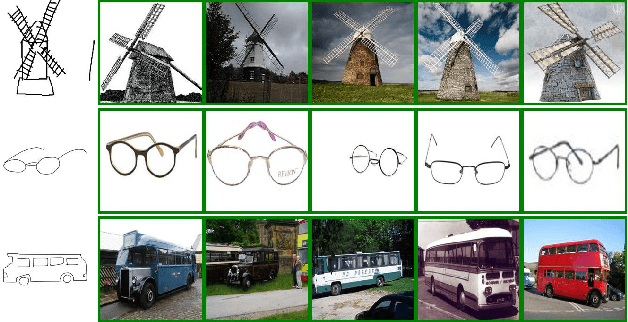

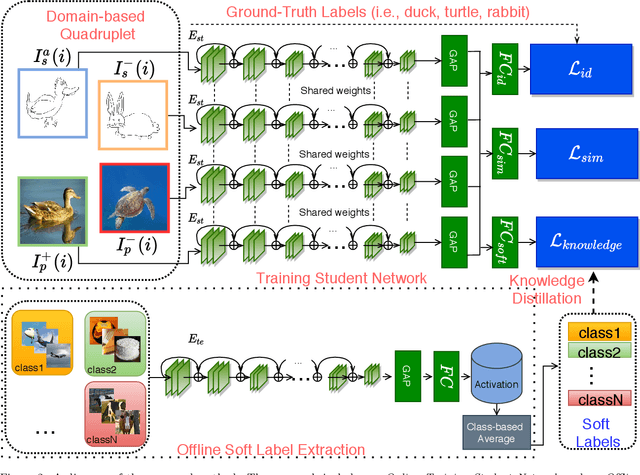
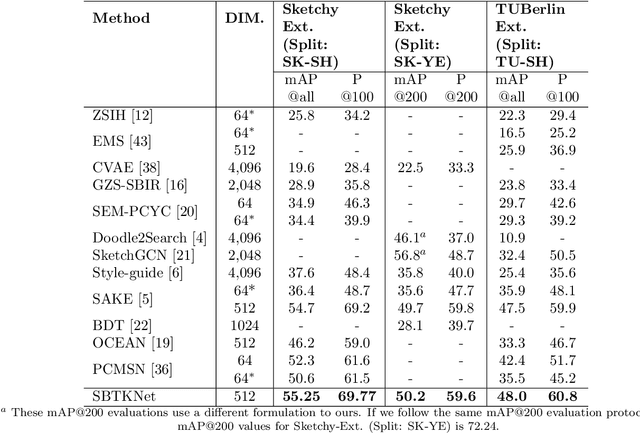
Abstract:Recently, Zero-shot Sketch-based Image Retrieval (ZS-SBIR) has attracted the attention of the computer vision community due to it's real-world applications, and the more realistic and challenging setting than found in SBIR. ZS-SBIR inherits the main challenges of multiple computer vision problems including content-based Image Retrieval (CBIR), zero-shot learning and domain adaptation. The majority of previous studies using deep neural networks have achieved improved results through either projecting sketch and images into a common low-dimensional space or transferring knowledge from seen to unseen classes. However, those approaches are trained with complex frameworks composed of multiple deep convolutional neural networks (CNNs) and are dependent on category-level word labels. This increases the requirements on training resources and datasets. In comparison, we propose a simple and efficient framework that does not require high computational training resources, and can be trained on datasets without semantic categorical labels. Furthermore, at training and inference stages our method only uses a single CNN. In this work, a pre-trained ImageNet CNN (e.g., ResNet50) is fine-tuned with three proposed learning objects: domain-aware quadruplet loss, semantic classification loss, and semantic knowledge preservation loss. The domain-aware quadruplet and semantic classification losses are introduced to learn discriminative, semantic and domain invariant features through considering ZS-SBIR as object detection and verification problem. ...
Bayesian Neural Networks: An Introduction and Survey
Jun 22, 2020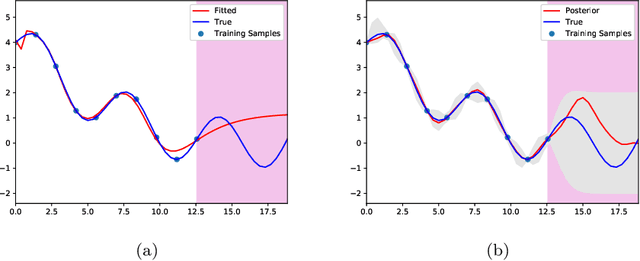
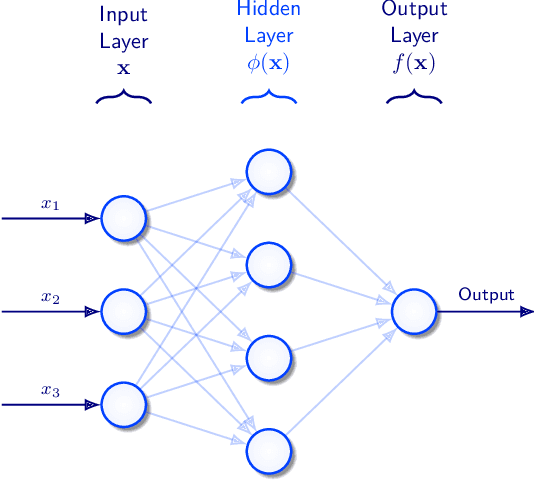
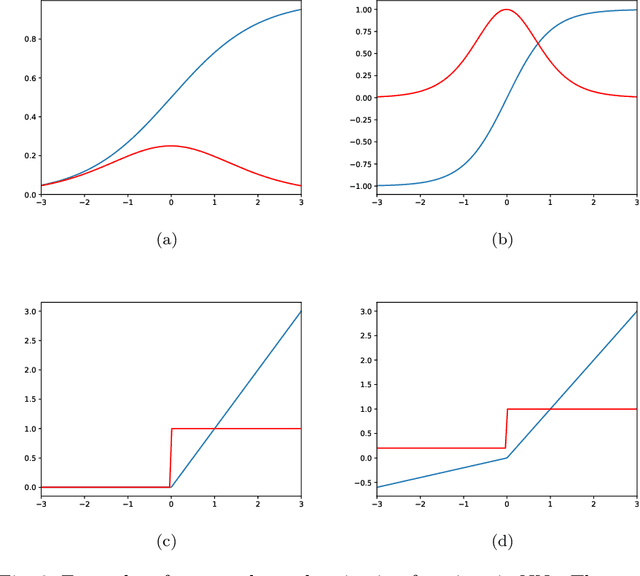
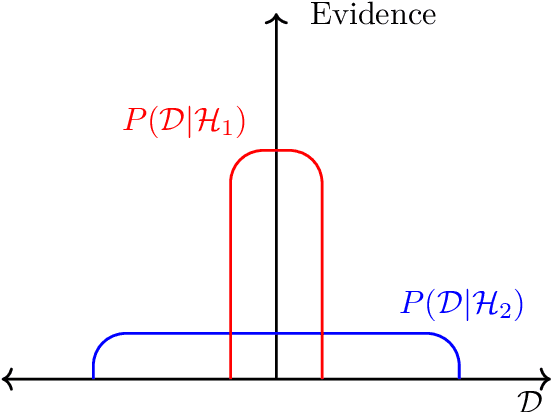
Abstract:Neural Networks (NNs) have provided state-of-the-art results for many challenging machine learning tasks such as detection, regression and classification across the domains of computer vision, speech recognition and natural language processing. Despite their success, they are often implemented in a frequentist scheme, meaning they are unable to reason about uncertainty in their predictions. This article introduces Bayesian Neural Networks (BNNs) and the seminal research regarding their implementation. Different approximate inference methods are compared, and used to highlight where future research can improve on current methods.
* 44 pages, 8 figures
Fast and robust pushbroom hyperspectral imaging via DMD-based scanning
Jan 30, 2017Abstract:We describe a new pushbroom hyperspectral imaging device that has no macro moving part. The main components of the proposed hyperspectral imager are a digital micromirror device (DMD), a CMOS image sensor with no filter as the spectral sensor, a CMOS color (RGB) image sensor as the auxiliary image sensor, and a diffraction grating. Using the image sensor pair, the device can simultaneously capture hyperspectral data as well as RGB images of the scene. The RGB images captured by the auxiliary image sensor can facilitate geometric co-registration of the hyperspectral image slices captured by the spectral sensor. In addition, the information discernible from the RGB images can lead to capturing the spectral data of only the regions of interest within the scene. The proposed hyperspectral imaging architecture is cost-effective, fast, and robust. It also enables a trade-off between resolution and speed. We have built an initial prototype based on the proposed design. The prototype can capture a hyperspectral image datacube with a spatial resolution of 192x192 pixels and a spectral resolution of 500 bands in less than thirty seconds.
 Add to Chrome
Add to Chrome Add to Firefox
Add to Firefox Add to Edge
Add to Edge